27 November, 2001
Dr. Alexander and Phil Forte went to the ice cliff dive hole to collect
specimens. Dr. Bowser tended the divers. Although the dive hole was in
Explorers Cove, it was far enough away to require us to take ski-doos to
the area. The dive gear is too heavy to carry that distance. The divers
dressed in most of their gear while they were in the dive hut. When we got
to the dive site, Phil chipped the round cover off the dive hole. It was
frozen in the hole. Ice had to be scooped from the surface of the water
before the divers could enter the water. The guide rope was anchored into
the ice before it was lowered down the dive hole. A basket with sediment
bottles, an emergency air supply, and flashing lights were attached to the
rope. Dr. Bowser helped the divers into their gear and rechecked their
regulators and tanks. The divers planned to generate bubbles within 40
minutes of their descent and to be back on the surface within 50 minutes;
if the divers had not surfaced within 65 minutes, then McMurdo would be
notified for help. As always, the divers returned exactly within the
scheduled time. As they were surfacing, I could stand on the ridge above
the underwater ice cliffs to hear their air bubbles. Dr. Alexander had
taken his underwater camera gear on the dive, but the conditions tonight
were not conducive for photos. It was darker, with fewer things to see,
than it had been two weeks before. The black sediment that was brought to
the surface had a strong sulfur smell. Dr. Bowser cut sections from the
core to take back to the lab. Dr. Korsun sifted and prepared the sediment
for further study.
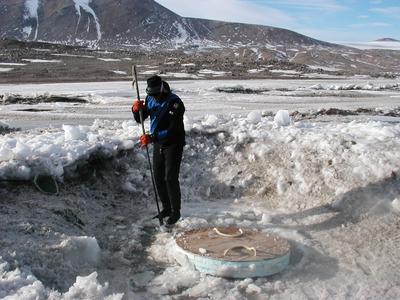
Phil Forte had to remove the frozen dive hole cover from this dive hole near our field camp.

Phil also scooped ice from the dive hole.
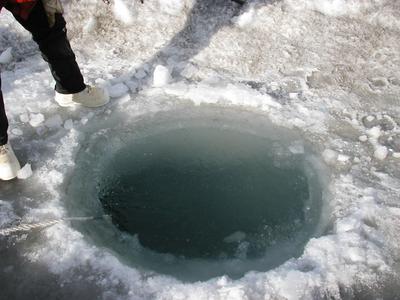
The "ice cliff" dive hole
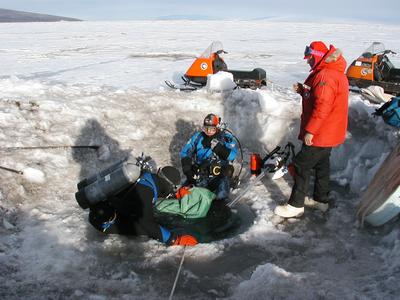
Phil and Steve were getting ready to make their dive. Phil was taking a net to hold specimen bottles.

Dr. Bowser is checking Phil's regulator before giving him the okay to dive.

Dr. Bowser is tending this dive. He will monitor the dive,and keep track of the time the divers are down under the ice. He is helping Dr.Alexander with his gear.

Dr. Alexander has his camera to document life under the ice. It's important to visually document the underworld environment and the foram's habitat.
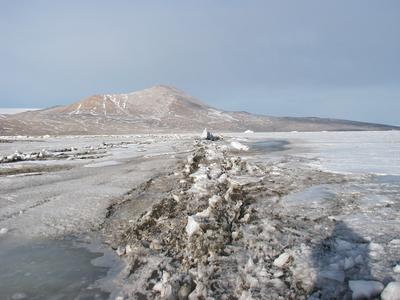
I could actually hear the bubbles coming from under this ice cliff ridge before the divers surfaced.
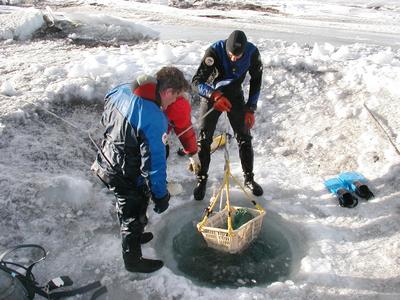
This basket holds the sediment containers. It is pulled up at the end of the dive. It is attached to a guide rope.,
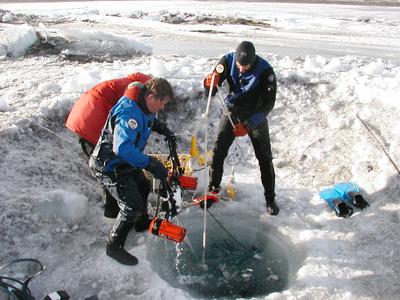
The camera, extra air supply, and flashing lights are also attached to the guide rope. The guide rope is anchored to the ice above the dive hole.

Dr. Alexander with camera after the dive
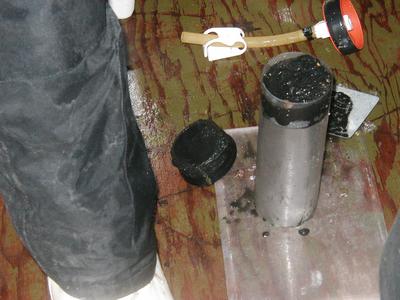
After the dive, Dr. Bowser is cutting a slice from the sediment core for further analysis.
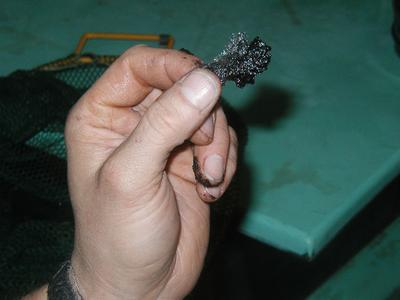
Dr. Bowser holding a piece of anchor ice found in the sediment core.
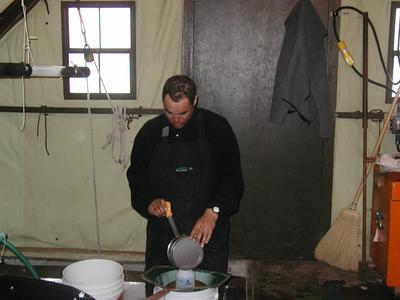
Dr. Korsun sifting the foram samples in preparation for sorting and studying foram specimens in the lab.
Contact the TEA in the field at
.
If you cannot connect through your browser, copy the
TEA's e-mail address in the "To:" line of
your favorite e-mail package.
|
